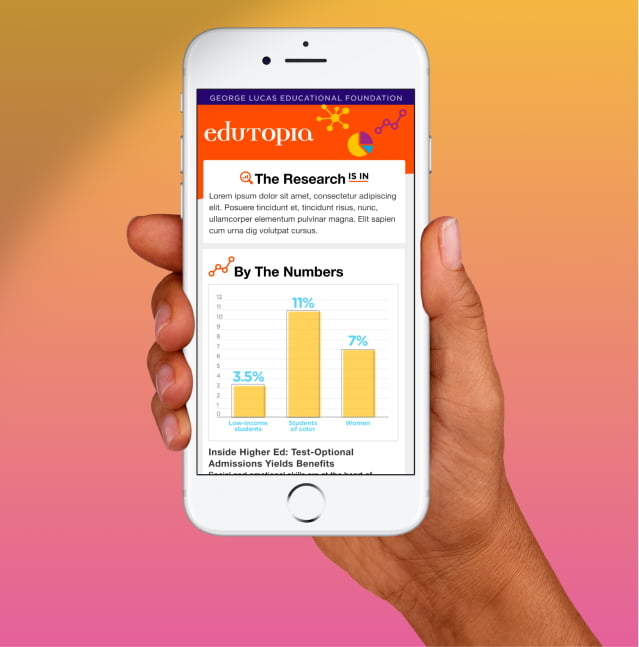
I recently heard a quote by Brené Brown that captures much of what is important to consider when we’re designing learning spaces for our students. She indicated that belonging and fitting in are opposites. When I consider this statement from my own educational journey as a black girl in mathematics education, a former high school math teacher, and a mathematics and science teacher mentor, I see truth and opportunity in this awareness. While there were moments in my own learning experiences when it was easy to fit into the structures that were applied to learning spaces, there were other structures that made it more difficult to feel a sense of belonging.
For example, as a student, I found it easy to show my mathematical thinking in writing for my teachers to review. I process my own thinking in verbal and written ways. However, it was hard to participate or feel a sense of belonging when my lived experiences and knowledge were overlooked or ignored in class.
THE TRUTH ABOUT FITTING IN
My journey in education tells me that my experiences as a learner aren’t unique. Often, students are expected to fit into structures applied in classrooms. Some of these structures, like raising hands to speak, are meant to control the flow of information during class. Other structures, like sharing your answer only if it hasn’t been shared before, are meant to define valid contributions and being knowledgeable in a school setting. These are just two examples of the myriad decisions that are made in schools that students have to follow.
In his book The Ethics of Educational Leadership, Ronald Rebore says that belonging is “the extent to which people feel personally appreciated, validated, accepted, and treated fairly within an environment.” The reason why working to fit in is a concern is that there’s evidence that shows, as Zaretta Hammond explored in her book Culturally Responsive Teaching and the Brain, that students’ brains are more freed up for learning when they feel a sense of belonging.
FIND OUT WHAT STUDENTS THINK
The best way to gain students’ perspectives on belonging or inclusion is to ask them. But we need to be sure that we’re asking in ways that make them comfortable enough to share.
Here are some ways for teachers to learn what students need:
Invite students to do an autobiography for your content. This activity allows them to share how they’ve learned and experienced being a learner in your class or classes like yours.The Benefits of Defining Inclusion With Your Students I taught math, so my students responded to the prompts below. You can replace math with your content.
- What is your earliest math memory? Who was with you in this memory? What makes this memory so memorable? What did others do to help you engage in this content?
- How is your math learning supported at home and in your community? Do you do any math activities outside of school (for example, in sports, hobbies, or games)?
- Do you have any suggestions for making this classroom a space where you are able to best learn?
Engage students in classroom conversations: These discussions can support your students in sharing what they need for your classroom to feel inclusive. A starting point for a conversation might be, “What does it mean to belong in a classroom?”
The Benefits of Defining Inclusion With Your Students
Student responses can be shared directly with you using journaling to engage in one-on-one discussions about their ideas. Think-pair-share and small self-selected student groups can be used to help students share their ideas as well. Finally, to share these ideas with the whole class to support consensus building, the teacher or a designated recorder can record ideas publicly to learn what your community can build on to develop a more inclusive classroom space.
The Benefits of Defining Inclusion With Your Students Using any version or combination of these prompts can support teachers in learning about students’ needs, ideas about learning, and definitions of inclusion and belonging. What’s most important is that you also answer the questions during the conversations so that students understand your thinking. This way, your ideas aren’t seen as more important or less negotiable than those that the students develop.
The Benefits of Defining Inclusion With Your Students
Equity of voice: Students’ language is not corrected unnecessarily, their perspective is valued, and their ideas are solicited.
Multiple grouping structures: Classes utilize fully randomized grouping and offer choices among partners. Teachers are transparent about the purpose of their grouping structures.
Gender-affirming practices: affirming pronouns and a range of content that demonstrates an expansive, inclusive view of all identities and genders are regularly used.
BE AWARE OF NUANCE
Teachers have an important role in supporting students to feel a sense of belonging in schools and classrooms. This work can take on many forms—from journaling about students’ own learning experiences to introducing students to people from their identities who have contributed to a particular field.The Benefits of Defining Inclusion With Your Students While there are many ways to support students’ sense of belonging and inclusion in a classroom,

